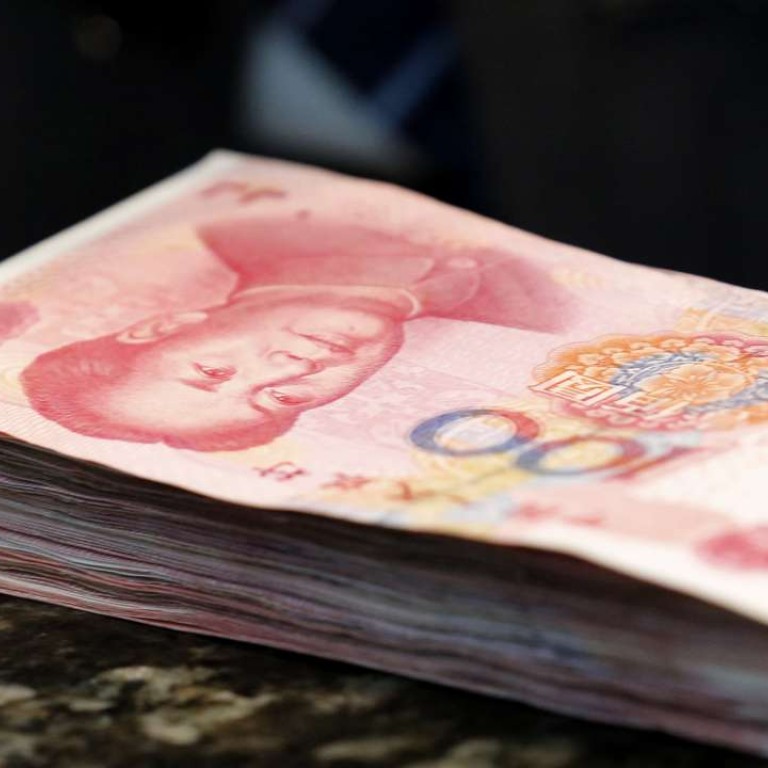
Mind the gap — Can Beijing narrow the onshore and mainland yuan rates?
Beijing seeks to narrow the difference in Hong Kong and mainland exchange rates of the Chinese currency
Beijing’s plan to promote unified onshore and offshore yuan exchange rates would boost the international trade in China’s currency.
Traders, though, said it won’t be that easy.
Wang Chunying, spokeswoman at the State Administration of Foreign Exchange, told a news conference on Thursday that the gap between the onshore and offshore yuan exchange rates narrowed in the first quarter and the country would like to see that situation continue.
“A unified yuan exchange rate will help companies better hedge currency risks,” she said.
Eleanor Wan, chief executive of BEA Union Investment Management, said that goal would not be easy to achieve as the offshore yuan — trading mainly in Hong Kong — is not traded on mainland China’s stock and bond markets which need the onshore yuan.
“Unification of onshore yuan and offshore yuan is not easy as long as the currency is not freely convertible,” Wan said.
China has not yet fully let the yuan, also called the renminbi (RMB) to become fully convertible. So the
onshore yuan, referred to by traders as CNY, is mostly traded by mainland brokers in China while the offshore yuan, called CNH, has been traded by international investors in Hong Kong and in some other overseas markets such as London and Singapore since 2010.
Ken Wong, China portfolio specialist of Eastspring Investment, said the goal to narrow the gap between the two yuan pools would mean China could promote the internationalisation of the currency.
“RMB internationalisation would continue to progress and if we can get the onshore and offshore yuan rates to be the same. this should only help speed the progress of the RMB internationalisation,” he said. “Anything short of abolishing capital controls would still put some concerns over the feasibility of RMB internationalisation.”
While the goal is good, he however said it would be easily done.
The price gap between onshore yuan and offshore yuan hit a record gap of 1,400 basis points on January 7. Offshore yuan traded at a deep discount to its onshore counterpart as some hedge fund managers tried to short-sell the currency in the offshore yuan market.
Short selling is done when an investor considers an asset will decline in value.
The gap only narrowed after People’s Bank of China, the central bank, intervened in the offshore yuan market and squeezed the CNH Hibor to a record high fixing at 66 per cent.
“I would doubt as how the PBOC can control the offshore yuan market. The main option would be to allow the onshore yuan market to match what the offshore yuan market is trading at,” Wong said.
He said if the PBOC wants to better control the gap, it may need to regulate the flows and liquidity to the offshore yuan market,
He said that overall, if the PBOC can narrow the gap between onshore and offshore yuan, Hong Kong would benefit.
“If we see an increase in RMB trading activities with the merger of the rates, then this could lead to more offshore yuan deposits for Hong Kong. Since there is less than 900 billion yuan in RMB deposits in Hong Kong, maybe that can help boost the CNH-HIBOR market in Hong Kong going forward,” he said.
“Businesses with exposures and liabilities in China should benefit from this as speculation between the CNY and CNH markets would cease and hence there would be more stability in the offshore renminbi interbank lending market rates,” Wong said.
Andrew Fung, executive director of Hang Seng Bank, said China could unify the onshore yuan and offshore rates by further capital account reforms which facilitate easier cross border flows and can lead to stability of the onshore yuan and offshore yuan spread.
“The spread has been very narrow and stable since the exchange rate has stabilised and offshore yuan interest rates are more in line with onshore rates,” Fung said
China has taken steps to achieve such a goal. Among the recent moves, it included the latest relaxation to allow global central banks to invest directly into China’s onshore fixed income market.
“PBOC governor Zhou Xiaochuan has said that he hopes the yuan will be fully internationalised by 2020. This may be a possible date for the eventual unification of both the offshore CNH and onshore CNY,” Heng said.
“The broad long-term benefits of a unified currency for China is positive, given that it will improve and deepen the liquidity in the currency market for China and Hong Kong.” he said.

